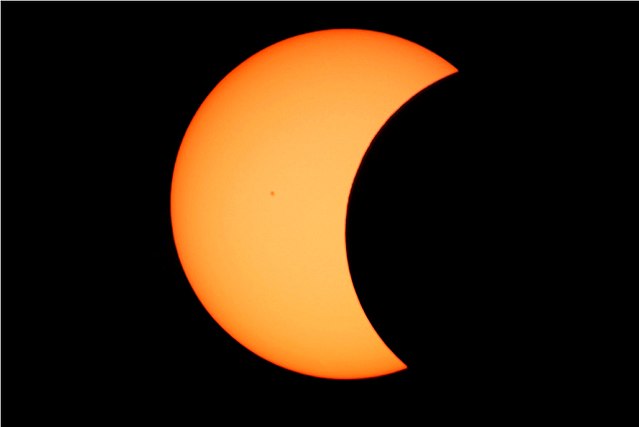Solar eclipse of December 14, 2020
A total solar eclipse took place on Monday, December 14, 2020, when the Moon passed between Earth and the Sun, thereby totally or partly obscuring the image of the Sun for a viewer on Earth. Totality occurred in a narrow path across Earth's surface across parts of the South Pacific Ocean, southern South America, and the South Atlantic Ocean, when the Moon's apparent diameter was larger than the Sun's so all direct sunlight was blocked. The partial solar eclipse was visible over a surrounding region thousands of kilometres wide, including parts of the Pacific Ocean, South America, southwestern Africa, and the Atlantic Ocean. The Moon's apparent diameter was larger than average because the eclipse occurred only 1.8 days after perigee.
Totality as viewed from Gorbea, Chile
Partial from Rengo, Chile, 15:07 UTC
Partial from Santiago de Chile, 16:02 UTC
Totality from Ministro Ramos Mexía, Argentina, 16:14 UTC
Solar eclipse of February 26, 2017
An annular solar eclipse took place on February 26, 2017. A solar eclipse occurs when the Moon passes between Earth and the Sun, thereby totally or partly obscuring the image of the Sun for a viewer on Earth. An annular solar eclipse occurs when the Moon's apparent diameter is smaller than the Sun's, blocking most of the Sun's light and causing the Sun to look like an annulus (ring). An annular eclipse appears as a partial eclipse over a region of the Earth thousands of kilometres wide. Occurring only 4.7 days before perigee, the Moon's apparent diameter was larger. The moon's apparent diameter was just over 0.7% smaller than the Sun's.
Partial from Buenos Aires, Argentina
Partial from Villa Gesell, Argentina, 13:18 GMT
Coyhaique, Chile, 13:35 GMT, 1 minute before annularity
Partial from Pisco Elqui, Chile, 13:48 GMT








